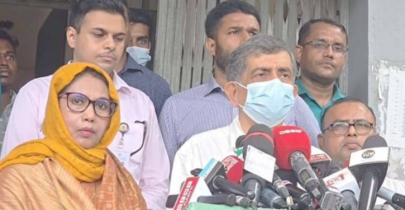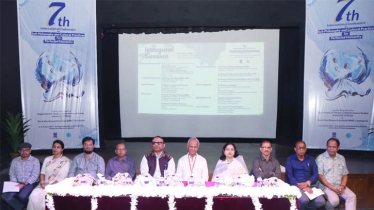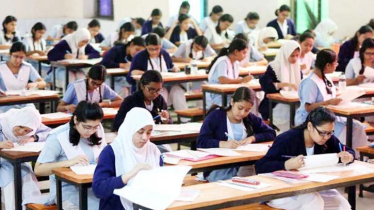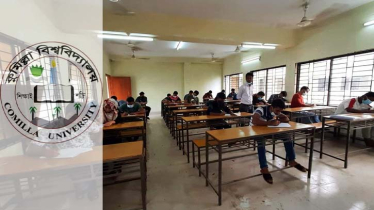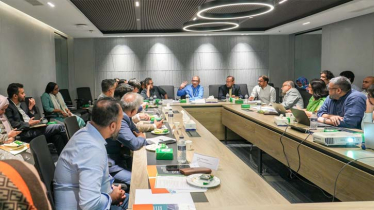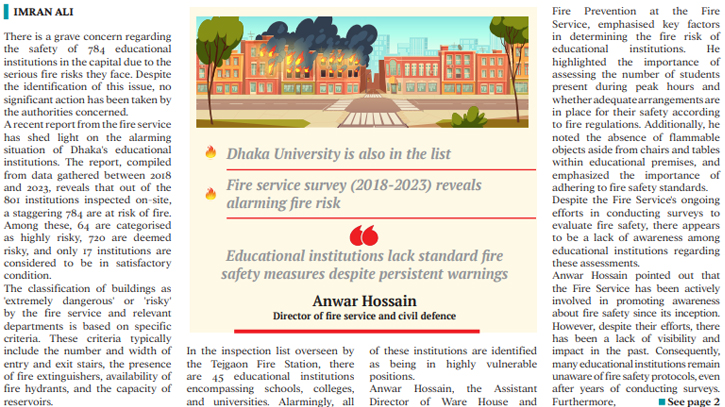
Photo : Messenger
There is a grave concern regarding the safety of 784 educational institutions in the capital due to the serious fire risks they face. Despite the identification of this issue, no significant action has been taken by the authorities concerned.
A recent report from the fire service has shed light on the alarming situation of Dhaka's educational institutions. The report, compiled from data gathered between 2018 and 2023, reveals that out of the 801 institutions inspected on-site, a staggering 784 are at risk of fire. Among these, 64 are categorised as highly risky, 720 are deemed risky, and only 17 institutions are considered to be in satisfactory condition.
The classification of buildings as 'extremely dangerous' or 'risky' by the fire service and relevant departments is based on specific criteria. These criteria typically include the number and width of entry and exit stairs, the presence of fire extinguishers, availability of fire hydrants, and the capacity of reservoirs.
In the inspection list overseen by the Tejgaon Fire Station, there are 45 educational institutions encompassing schools, colleges, and universities. Alarmingly, all of these institutions are identified as being in highly vulnerable positions.
Anwar Hossain, the Assistant Director of Ware House and Fire Prevention at the Fire Service, emphasised key factors in determining the fire risk of educational institutions. He highlighted the importance of assessing the number of students present during peak hours and whether adequate arrangements are in place for their safety according to fire regulations. Additionally, he noted the absence of flammable objects aside from chairs and tables within educational premises, and emphasized the importance of adhering to fire safety standards.
Despite the Fire Service's ongoing efforts in conducting surveys to evaluate fire safety, there appears to be a lack of awareness among educational institutions regarding these assessments.
Anwar Hossain pointed out that the Fire Service has been actively involved in promoting awareness about fire safety since its inception. However, despite their efforts, there has been a lack of visibility and impact in the past. Consequently, many educational institutions remain unaware of fire safety protocols, even after years of conducting surveys.
Furthermore, with the rapid increase in the number of educational institutions, there is a growing concern that those responsible for approving these establishments may not fully recognise the importance of safeguarding academic buildings against fire hazards. This lack of awareness and prioritisation of fire safety measures underscores a critical gap in understanding and addressing the risks associated with fire incidents in educational settings.
Professor Dr. Md. Zillur Rahman, Chairman of the Department of Disaster Science and Management at Dhaka University, stressed the critical importance of prioritising fire safety measures in educational institutions, including Dhaka University, which is also identified as vulnerable to fire risks. He emphasised the necessity for educational institutions to incorporate fire safety considerations into their building designs.
Dr. Rahman highlighted a concerning trend of fires becoming more prevalent, indicating a pressing need to address fire safety concerns promptly. He noted that historically, fire safety has not been given adequate attention, contributing to the increasing incidence of fires.
One particular issue Dr. Rahman addressed is the inadequate design of emergency fire exits in educational institutions across the country. He pointed out that, unlike in developed countries where emergency fire exits are typically located outside the building and offer exits from each floor, in Bangladesh, these exits are often situated inside the building. This design flaw can result in tragic consequences, as individuals may become trapped or succumb to smoke inhalation during a fire emergency.
Professor Dr. Md. Zillur Rahman further emphasised that while Dhaka University does have emergency fire exits within its buildings, these inner stairs may not be as effective during a fire emergency. He reiterated the importance of situating emergency fire exits outside the building for optimal safety. By positioning emergency fire exits externally, individuals can swiftly evacuate the premises in the event of a fire, minimising exposure to smoke and ensuring a quicker and safer escape.
Professor Dr. Md. Zillur Rahman also stressed the importance of conducting regular fire drills in educational institutions to prepare students, faculty, and staff for emergencies. Additionally, he emphasised the necessity of providing fire safety training starting from school-level education. Dr. Rahman highlighted that ensuring fire safety involves considering various factors, including the type of building and its usage.
He emphasised that educational institutions where large number of people gather, such as academic buildings and residence halls, require particular attention regarding fire safety measures. Dr. Rahman noted ongoing efforts to improve emergency fire exits, emphasising the importance of keeping them operational and ensuring quick access in case of emergencies. He suggested keeping the key to these exits in a readily accessible location to facilitate immediate action during accidents or emergencies.
Delwar Hossain Majumdar, the chief engineer of the Directorate of Education Engineering, outlined some of the measures undertaken to ensure fire safety in new buildings constructed for educational institutions. While acknowledging that these measures are somewhat limited in scope, he highlighted key considerations incorporated into new building designs.
Firstly, fire extinguishers are installed on every floor of new educational buildings to provide readily accessible firefighting equipment in the event of an emergency. Additionally, emphasis is placed on maintaining wide staircases to facilitate safe evacuation during fire incidents.
Moreover, every new building design includes provisions for a water pump, which can be instrumental in firefighting efforts by providing a reliable water source to extinguish fires.
Delwar Hossain Majumdar expressed concerns about the challenges associated with working on projects involving risky educational institutions. He suggested that any government projects involving such institutions should be prohibited. However, he emphasised that his department specialises in retrofitting or strengthening existing buildings, implying that they have the expertise to improve the safety of vulnerable structures.
Majumdar also indicated a willingness to collaborate with risky educational institutions if directed by the Ministry of Education. Furthermore, he offered to assess and identify dangerous buildings if tasked to do so.
Delwar Hossain Majumdar further emphasised the necessity for the government to initiate a comprehensive survey to assess the extent of fire risk in educational institutions as part of a dedicated project. He expressed readiness to offer the required technical assistance for such an endeavor.
Messenger/Fameema

